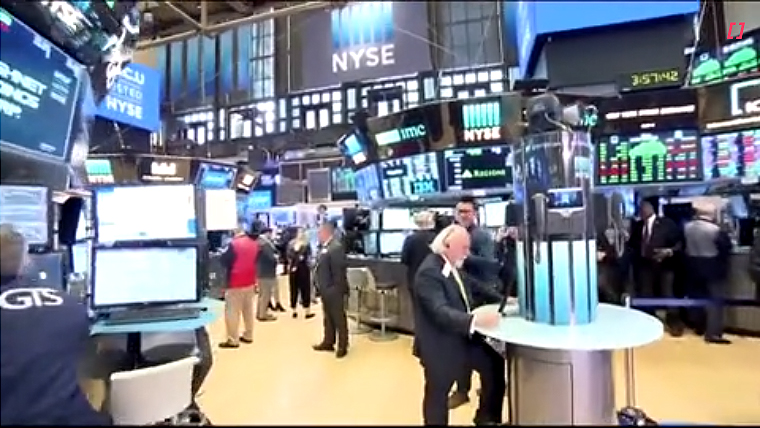
Looking at market movements, the easiest story to tell is one of exhaustion of the post-election Trump trades. US equities are down modestly, and US Treasury yields have fallen, despite stronger than expected US economic data. The USD reached a fresh high before turning down. The NZD found support at 0.5850 and has recovered a little to 0.5875.
US equities show modest falls with the S&P500 down 0.3% in early afternoon trading. US equities are struggling to make further gains after reaching record levels in the wake of the post-election euphoria. European equities haven’t been moving in line with US equities recently and that has also been the case overnight, with the Euro Stoxx 600 index up 1.1%. The UK FTSE100 index rose 0.5%.
US economic data released overnight conveyed a picture of a still-robust labour market and slightly higher inflation.
Initial jobless claims fell 4k to 217k last week, its lowest level since May and running slightly below the average of the past 2-3 years. The effects of Boeing’s strike and hurricanes have largely been washed out now, so the picture is one of a healthy underlying labour market, with firms seemingly reluctant to fire workers, managing their workforces by less hiring instead.
PPI data were slightly stronger than expected in October, with headline and core measures picking up. The ex-food and energy index rose 0.3% m/m and 3.1% y/y. The components that feed into the PCE deflator were stronger than expected, resulting in analysts nudging up their core PCE deflator forecasts to 0.3%. Recent inflation data show no further progress in getting inflation down, and the expected annual core PCE gain of 2.8% y/y would be the highest since April.
The initial market reaction to these two releases was higher US rates and a stronger USD, but this proved to be temporary. Treasury yields are lower across the curve, led by the long end, with the 2-year rate down 3bps to 4.26% and the 10-year rate down 6bps to 4.39%, after stretching up to an overnight high of 4.48%. Higher rates during the NZ trading session mean that the yield is about 8bps lower compared to the NZ close.
Despite lower Treasury yields, expectations for the Fed’s December meeting are little changed, a slight paring of rate cuts, to 20bps. Speaking just ahead of the data releases, Fed Governor Kugler, normally seen to be on the dovish side of the committee, had a more hawkish leaning. She said the Fed must pay attention to both sides of the dual mandate and “if any risks arise that stall progress or reaccelerate inflation, it would be appropriate to pause our policy rate cuts”. She was referring to “stubborn housing inflation and higher inflation in certain goods and services”.
In other economic news, euro area GDP rose 0.4% q/q in Q3, in line with the flash estimate. Australian labour market data remained consistent with tight conditions continuing, with the unemployment rate steady at 4.1%, running below the 4.3% level projected by the RBA in Q4.
In currency markets, the USD DXY index rose to its highest level in over a year, before selling pressure emerged. A fall in EUR to break below 1.05 seemed to be a trigger for the turnaround, with the euro since recovering to 1.0560. GBP fell to as low as 1.2630, now back to around 1.27. USD/JPY rose to a fresh high near 156.25 before falling to 155.70.
The NZD fell to its key support level of 0.5850, before recovering and it currently sits at 0.5875. The move reinforces the significance of that support level – April and August lows were also around 0.5850. In our FX forecast update on Monday we suggested that the support level could well be broken before the end of the year, with deeper lows into the first half of next year near 0.55.
The AUD trades at 0.6475 this morning and NZD/AUD is slightly stronger at 0.9070 and most NZD cross movements are insignificant.
In the domestic rates market yesterday, there were offsetting forces, with higher global rates imparting an upward bias to yields while interest to receive short-term swap rates was a downside force. The net result was a clear steepening in the NZGB curve. The weekly tender was well attended, and the 10-year rate closed the day up 4bps at 4.71%. In the swaps market the 2-year rate fell 2bps to 3.91% while the 10-year rate rose 3bps to 4.36%.
In the day ahead, during NZ trading hours this morning Fed Chair Powell, NY Fed President Williams and BoE Governor Bailey will all be speaking at separate events. Japan Q3 GDP and China monthly economic indicators will be released this afternoon. Tonight, UK Q3 GDP and US retail sales are the key releases.




We welcome your comments below. If you are not already registered, please register to comment.
Remember we welcome robust, respectful and insightful debate. We don't welcome abusive or defamatory comments and will de-register those repeatedly making such comments. Our current comment policy is here.